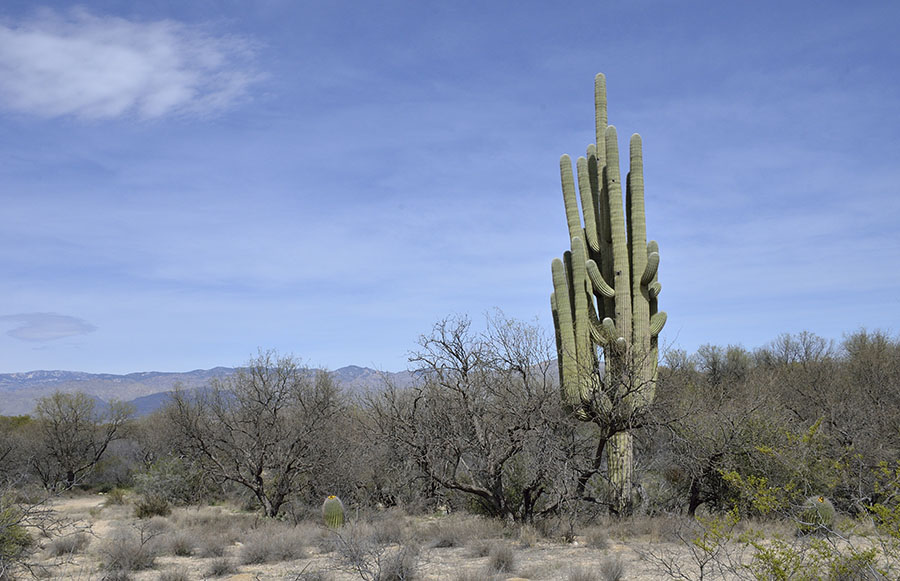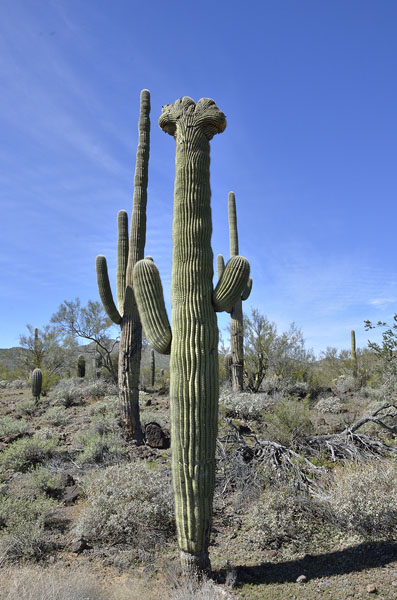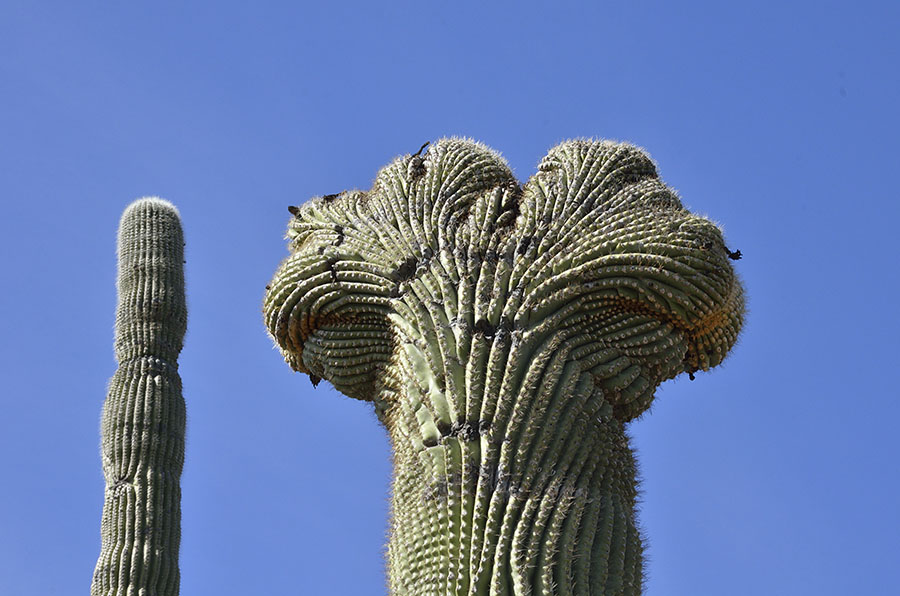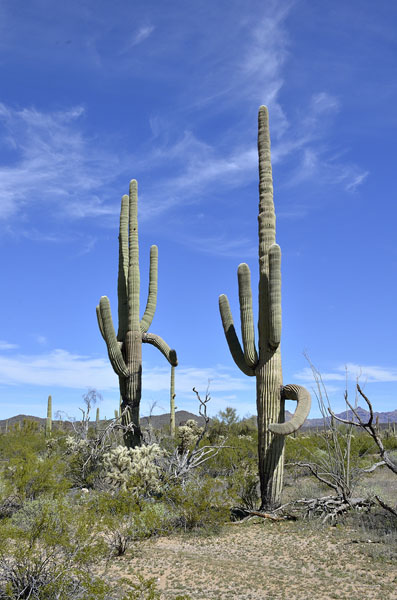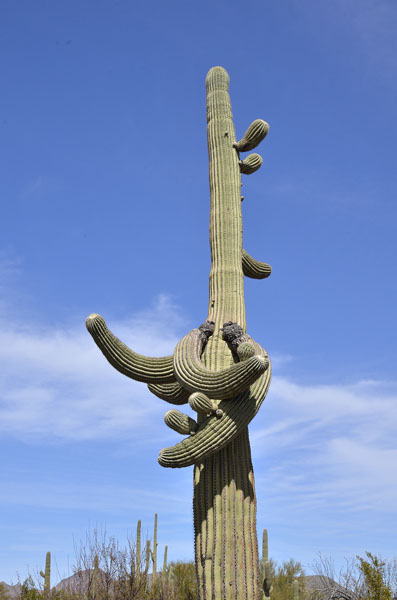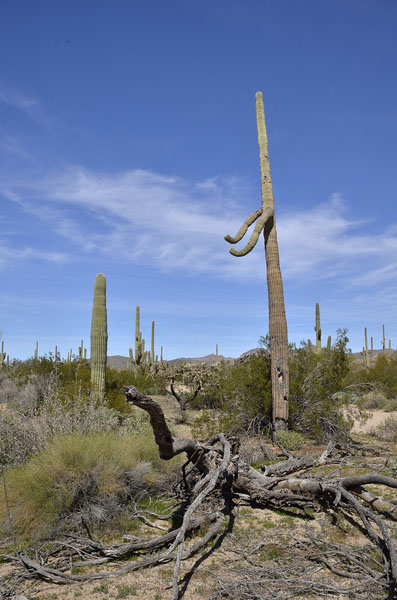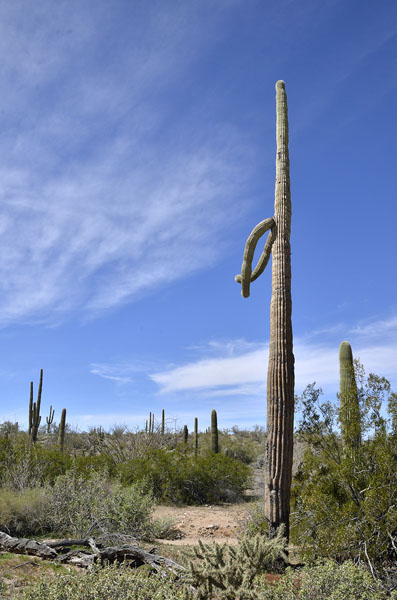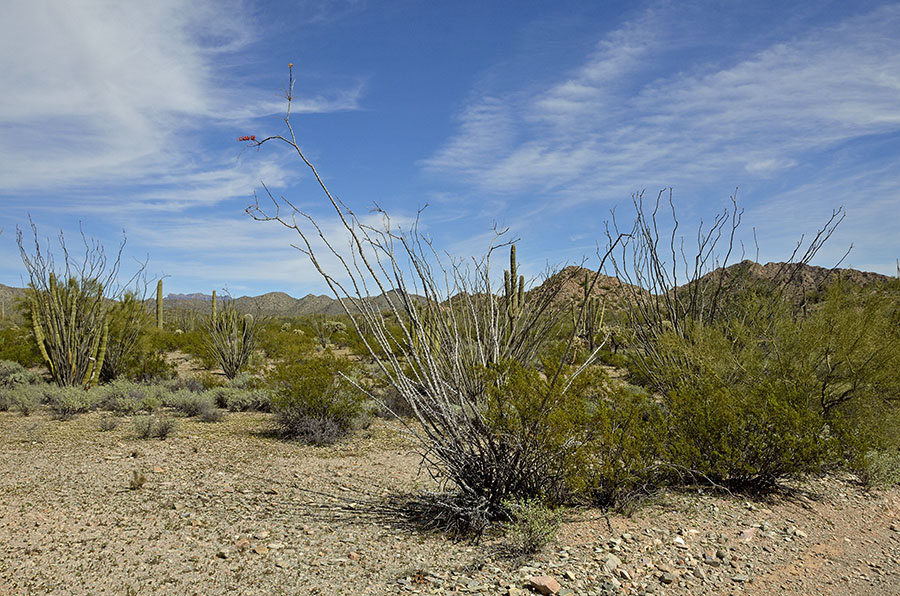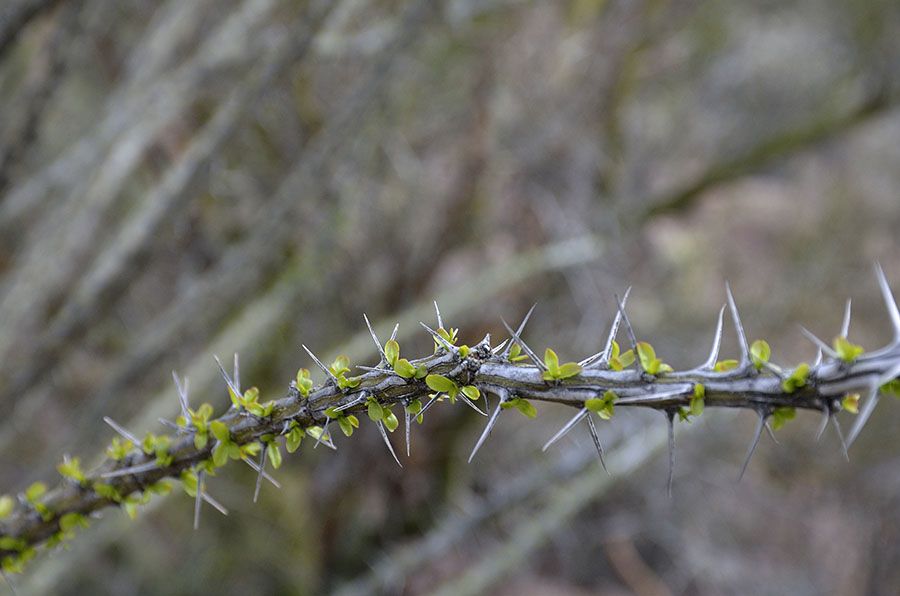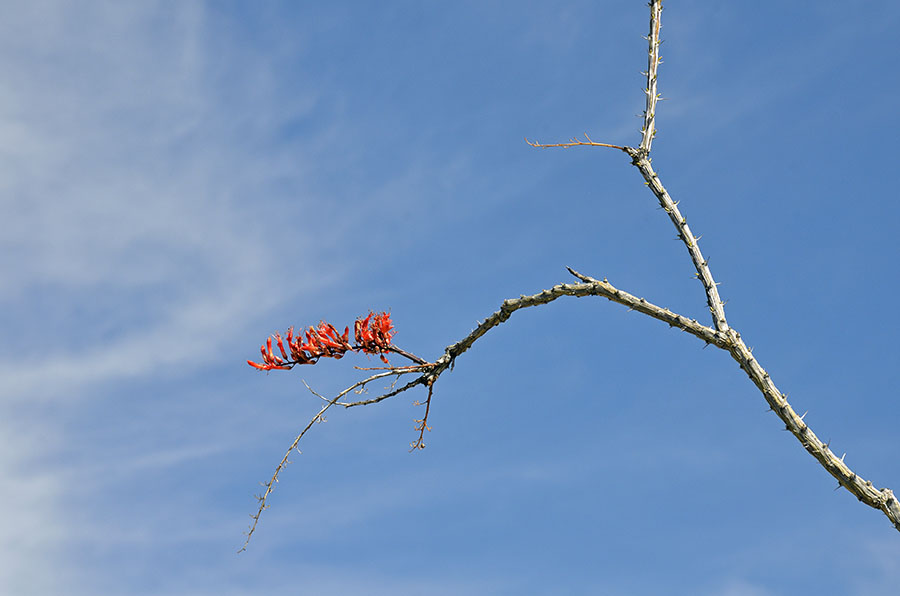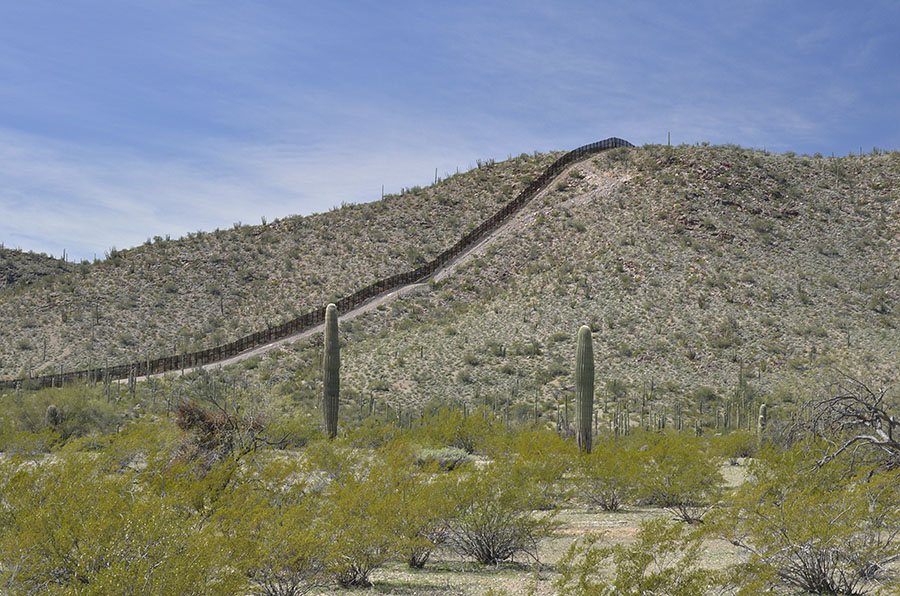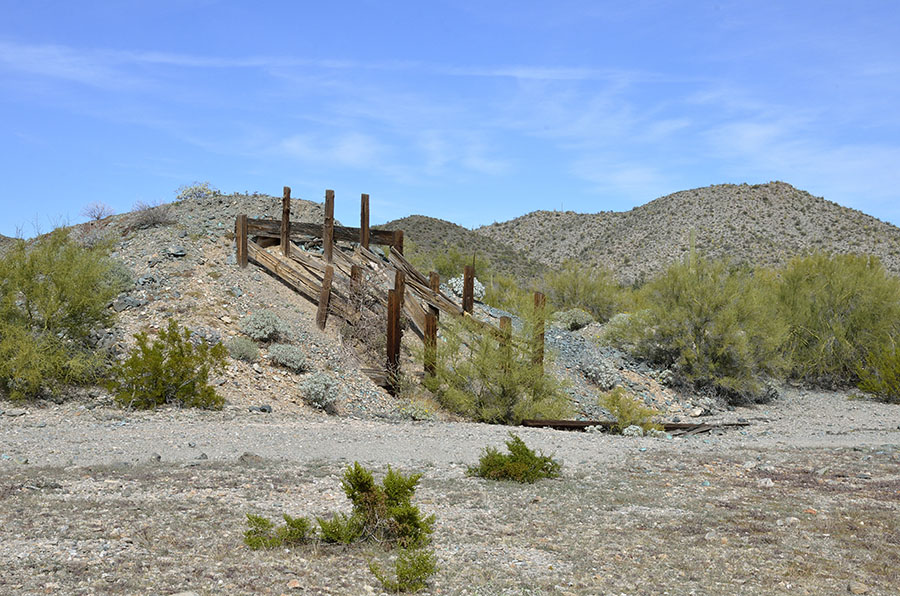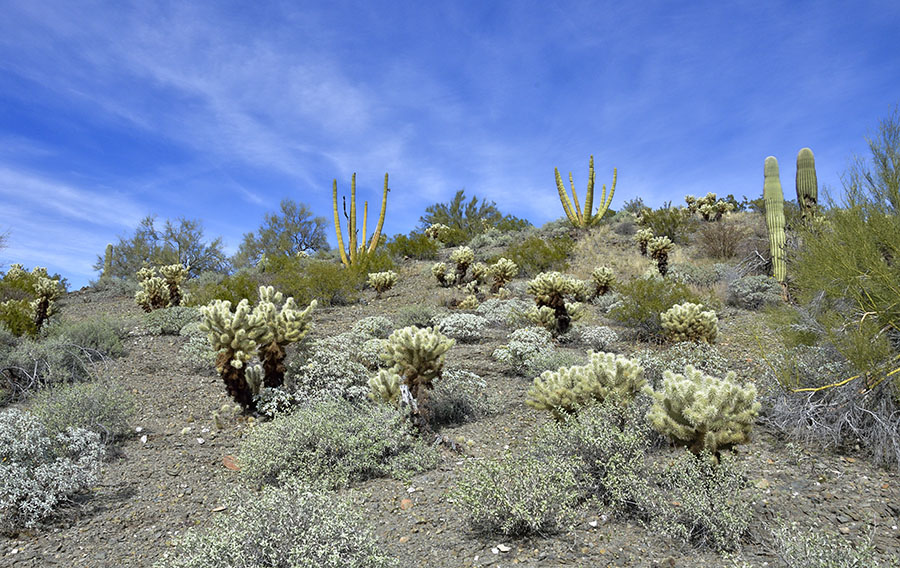Because “C” is for “cactus”… we wanted to see more. So we moved to another part of Arizona, closer to Tucson, and spent a nice long day hiking around the east side of Saguaro National Park. Saguaro NP is unusual since it’s a wild place so close to a city, and it’s split into two pieces – one on each side (east and west). The west side is at a lower elevation so it’s warmer and the cactus grow bigger, but we were closer to the east side so that’s where we headed. We got lucky and found a ranger-led hike – always a perfect way to learn a lot about a new place.
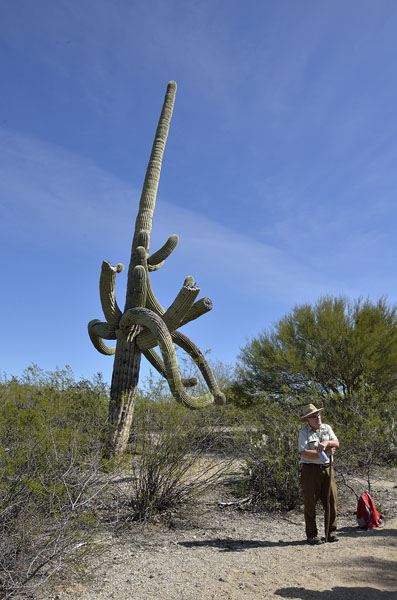
We learned about the fishhook barrel cactus that, in this area, tend to lean to the southeast. With the unusual amount of precipitation Arizona had seen recently, the cactus soaked up lots of water… and what happens when you drink too much?? Yep – you keel over.
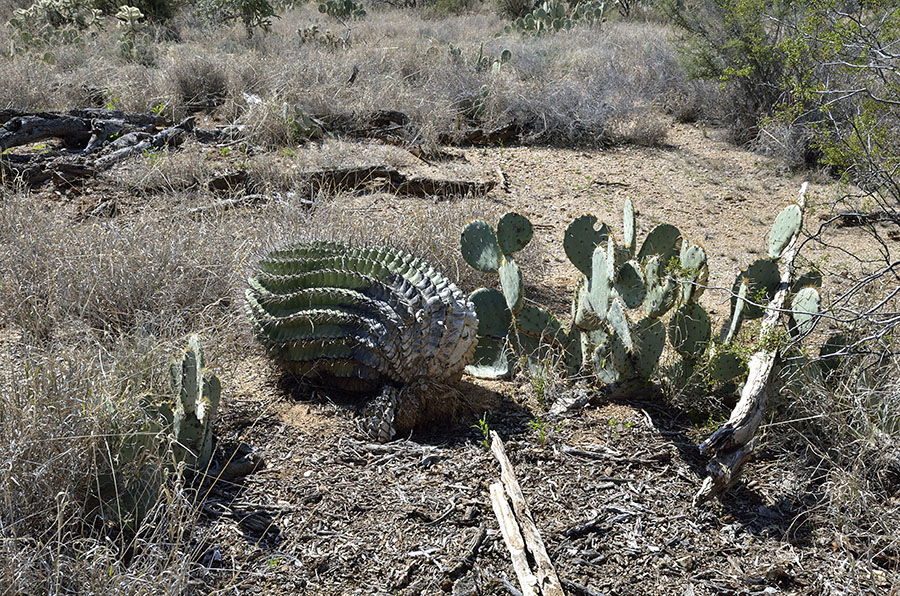
We learned about some of the other types of cactus such as hedgehog, and some varieties of cholla like this beautiful purple staghorn cholla.
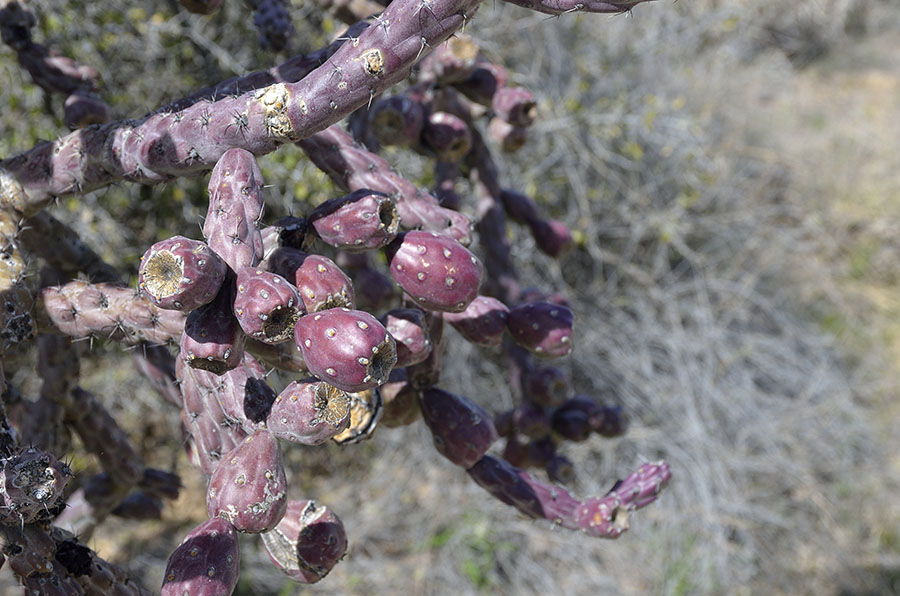
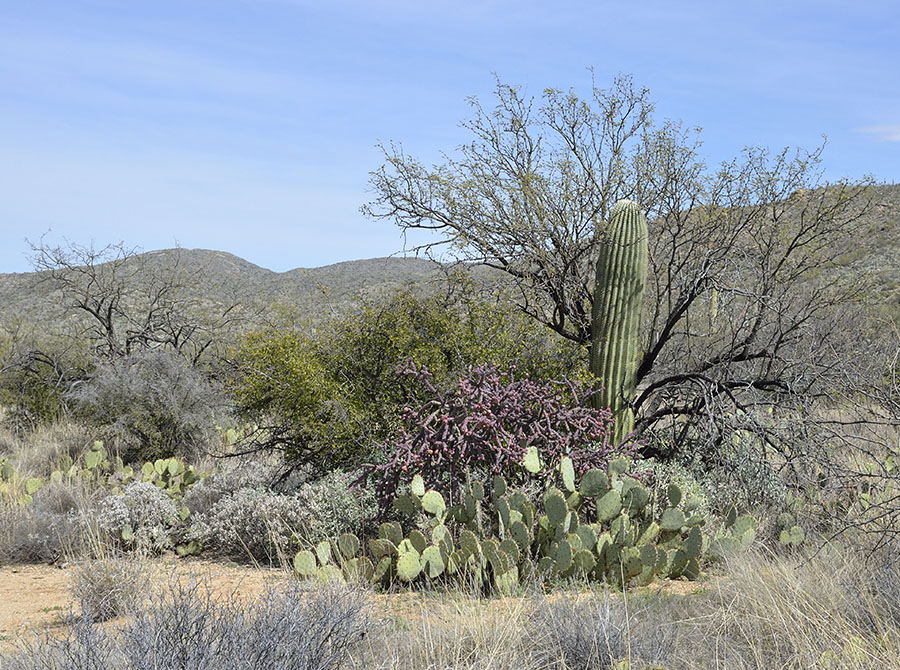
After the ranger hike we headed off on our own to sample the rabbit’s warren of trails. Beautiful views!
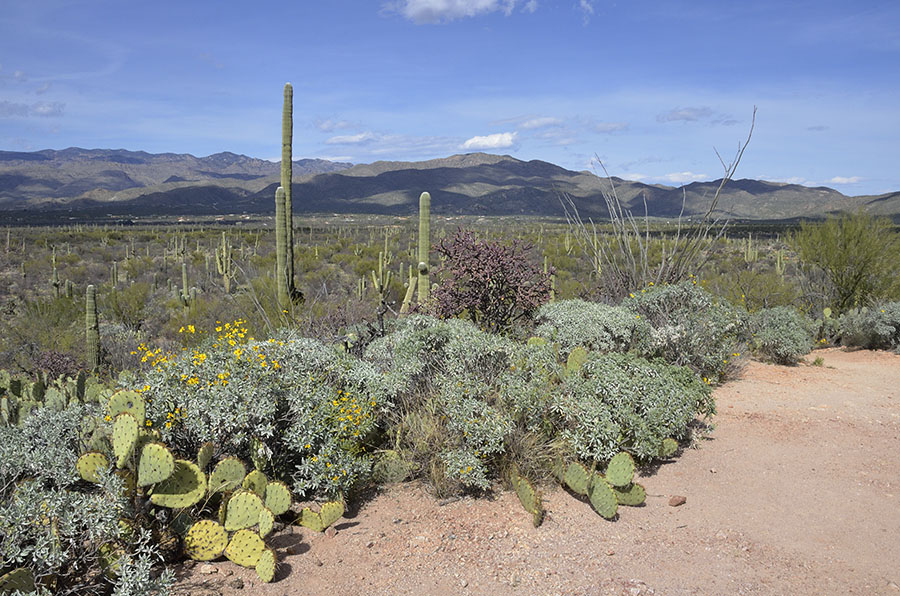
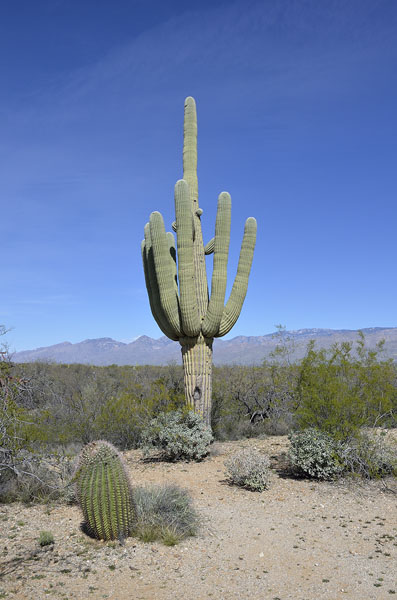
We found a cactus wren – which makes its nest in the saguaro…

…and another crested saguaro!
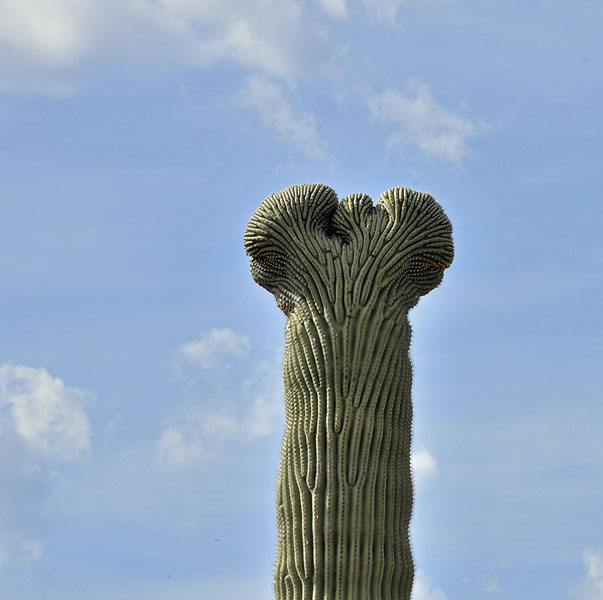
We found a trail crew making some improvements pretty far out on the trails, and Jim fell in love with their nifty motorized carts with tractor treads. Good thing the crew kept the keys safe.
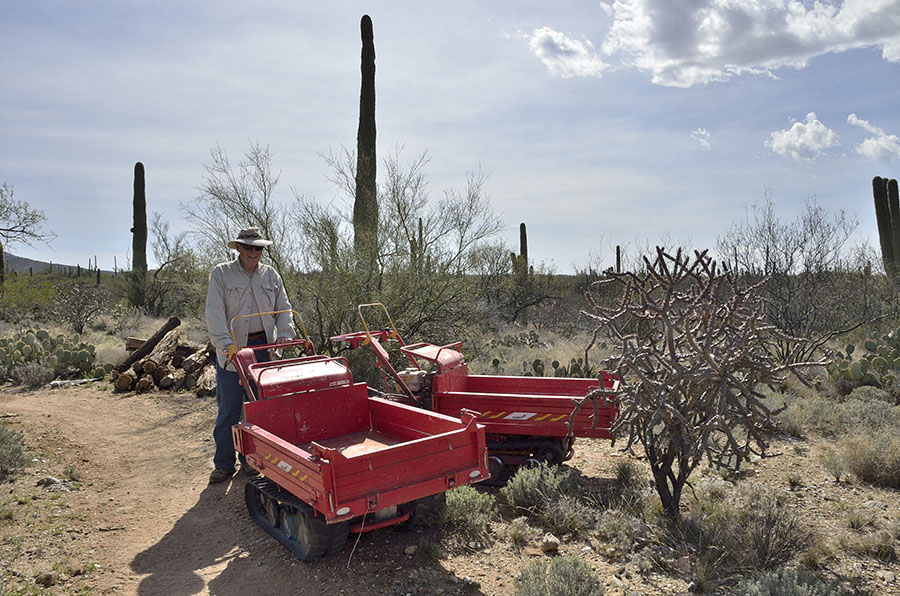
We hiked about 10 miles around the park that day even though it was a little toasty for us – temps in the 80s! Even this roadrunner looked hot, but maybe that’s just my imagination.
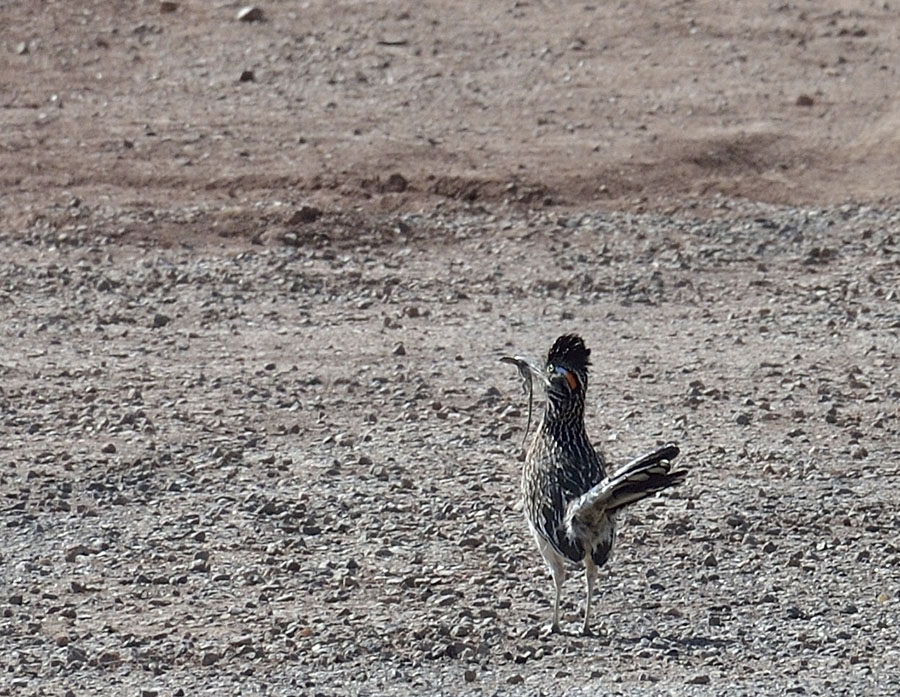
We had a great day among the saguaros and mesquite… and wished we had time to check out the west side of the park. Another item for “next time”…
